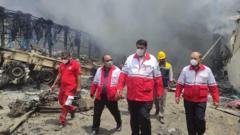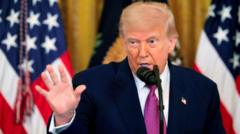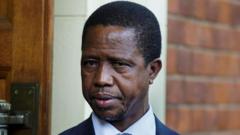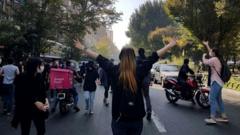Grief has rapidly transformed into indignation in Iran following a catastrophic explosion at Shahid Rajaee port, leading to significant casualties, injuries, and a national day of mourning. Speculation regarding improper handling of hazardous materials fuels anger toward authorities amid growing concerns over future economic impacts.
Tragedy and Turmoil: Iran's Port Explosion Sparks National Outrage

Tragedy and Turmoil: Iran's Port Explosion Sparks National Outrage
At least 40 dead and thousands injured in catastrophic port explosion, igniting public fury and calls for accountability
In a shocking turn of events, Iran is grappling with both grief and mounting anger following a devastating blast at its largest commercial port, Shahid Rajaee, which claimed at least 40 lives and left over 1,000 injured. Occurring Saturday morning, the explosion has sent a thick plume of toxic smoke into the sky, prompting health officials to advise citizens in nearby towns and cities to remain indoors and wear protective clothing.
As emergency efforts continue, schools and offices in Bandar Abbas—the nearest southern city—have been ordered to close. Anticipated events, such as local festivals, morphed into somber gatherings to honor the victims and pray for the survivors. National authorities declared a day of mourning on Monday, while Hormozgan province is set to observe an extended period of remembrance.
The severity of the incident is not just physical; it is giving rise to a fervent blame game within the country. Reports from Ambrey Intelligence suggest that the initial intensity of the blaze preceding the explosion indicates potential negligence linked to the handling of a shipment intended for Iranian ballistic missiles. The firm claims containers discarding solid rocket fuel were key to the catastrophic event.
Speculation has circulated that the Iranian military was improperly storing rocket fuel imported from China at the port, a claim refuted by military officials. Many citizens are directing their ire towards the authorities, demanding accountability: How could volatile materials be exposed to such risk?
In response to the crisis, Iranian President Masoud Pezeshkian inspected the site, proclaiming a commitment to uncover the cause of the tragedy as he initiated an investigation. Officials have made conflicting statements regarding whether military-grade materials were present, with the Defense Ministry claiming no such cargo had been involved.
The explosion's implications could extend beyond immediate health concerns, potentially disrupting the economy as Shahid Rajaee port is vital for the import of nearly 80% of Iran's goods. Authorities initially warned of potential food shortages, but later minimized these concerns, asserting that only a portion of the port was affected.
Images from the disaster zone illustrate a chaotic scene, with helicopters dousing flames and rescue teams working amidst wreckage. The Kremlin announced assistance, dispatching firefighting aircraft to help tackle the ongoing crisis, while condolences poured in from around the region, including offers of support from nations like Saudi Arabia and India.
The strike occurred concurrently with U.S.-Iran discussions focused on Tehran's controversial nuclear program in Oman, raising questions about the intersection of these critical diplomatic efforts and domestic turmoil. Iran maintains that its nuclear ambitions are strictly for civilian purposes, despite ongoing tensions with Western nations regarding uranium enrichment.




















